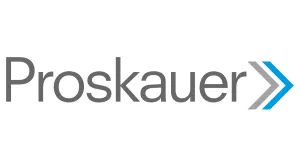Private Credit Defaults Decrease to 1.41% in Q3 from 1.64% in Q2
NEW YORK, October 24, 2023 – Proskauer, a leading international law firm, today released the results of its quarterly Private Credit Default Index (the “Index”) for senior-secured and unitranche loans. The Firm announced an overall default rate of 1.41% for the third quarter of 2023, a decrease for the second straight quarter. In Q2 and Q1, the overall default rates were 1.64% and 2.15%, respectively.
While the overall default rate decreased this quarter, the default rate for companies with greater than $50 million of EBITDA increased modestly to 1.2% from 0.8% in Q2. Similarly, for companies with EBITDA between $25-$49.9 million, the default rate increased from 1.6% to 2.5%. However, for smaller companies, defined as those with EBITDA under $25 million, the default rate decreased from 2.1% to 0.7%. Notably, the default rate for all EBITDA bands was below the default rate reported by Fitch Ratings for the second consecutive quarter.
“In the face of tremendous economic and geopolitical headwinds, private credit remains resilient. With almost 1,000 private credit loans in the Index, this conclusion is inescapable,” said Stephen A. Boyko, partner in Proskauer’s Private Credit Group.
Proskauer’s Q3 2023 Private Credit Default Index includes 990 active loans, representing $146.7 billion in original principal amount.
The Firm’s Private Credit Default Index tracks senior-secured and unitranche loans in the United States and breaks down default rates by EBIDTA and industry as well as default type (payment, bankruptcy, financial covenant, other material default, etc.). The full report, available only to the Firm’s direct lending clients, also contains a comparison to the default rates published by the rating agencies, historical trends by industry and EBITDA bands, defaults by default type, defaults in cov-lite loans and defaults by year of origination.
Methodology
Our Index is based on U.S. dollar denominated senior secured and unitranche loans. Default rates are calculated on the last day of the quarter by dividing the number of defaulted loans by the aggregate number of loans in the Index.
While there are varying conventions of what is considered a default for purposes of calculating a default rate, the Index includes loans that have a payment, financial covenant or bankruptcy default, loans that are otherwise in default if the default is expected to continue for more than 30 days (excludes immaterial defaults) and loans that were amended in anticipation of a default. A default is assumed to take place on the earliest of:
- The date a debt payment was missed
- The date a distressed restructuring occurs
- The date the borrower filed for, or was forced into, bankruptcy
- The date a financial covenant default occurs
- The date that a default occurs if that default is expected to continue for more than 30 days (excludes immaterial defaults)
- The date the loan is modified in anticipation of a default
For the purposes of this study, if a borrower re-emerges from bankruptcy, or otherwise restructures its defaulted debt and, reestablishes regular, timely payment of all its debts, we reclassify the borrower as a non-defaulted borrower, as of the date of emergence or restructure.

